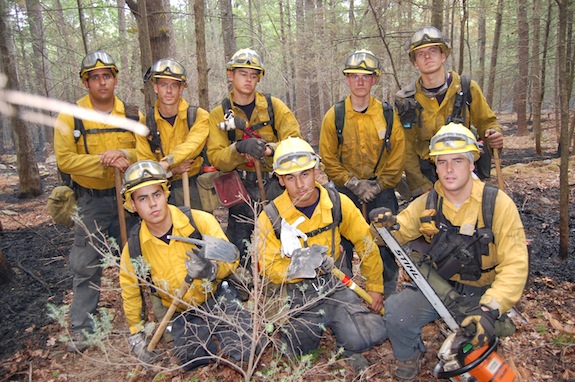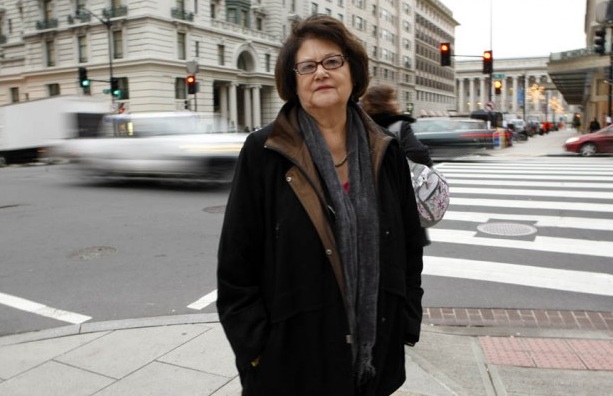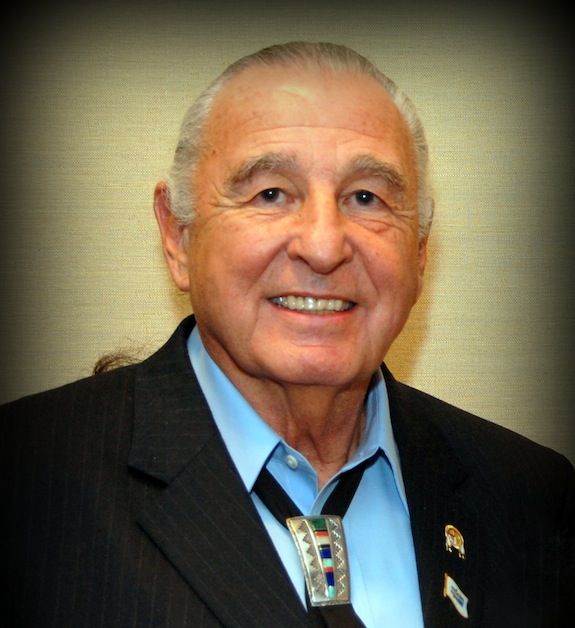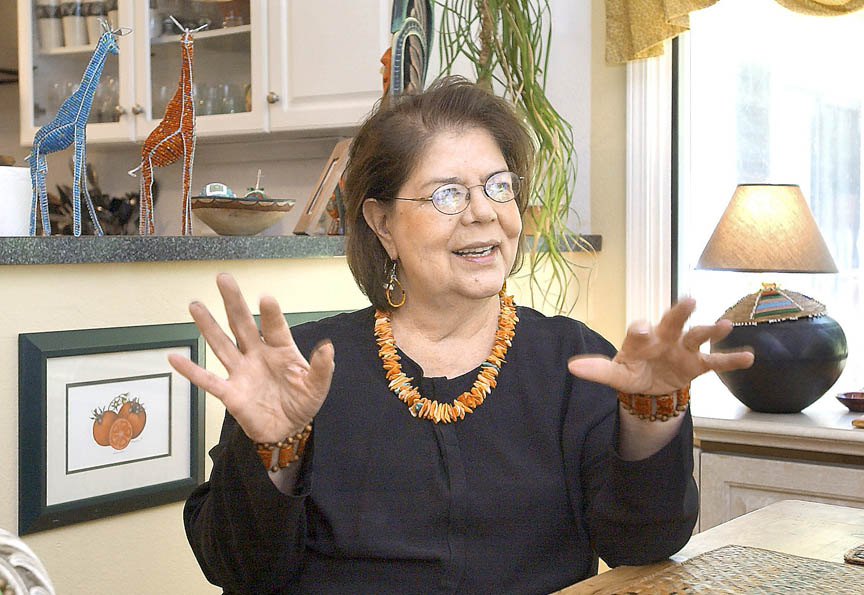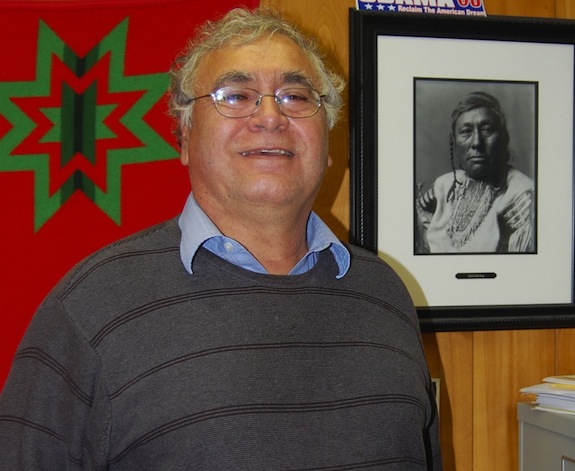Freedom Fighters: 8 Courageous Native Americans

Indian Country boasts an impressive number of elders, heroes, activists and trailblazers who work for the betterment of Indigenous Peoples as a whole. This is not an easy task, and those who truly fulfill this mission are worth noting—especially during this week as inhabitants of the land known today as the United States celebrate the signing of the Declaration of Independence.
In this light we are taking some time to recognize eight courageous Native heroes, both men and women, who have unflinchingly confronted the injustices faced by Indigenous Peoples. Although there are thousands upon thousands of them, these are just a few of the American Indians who are today displaying extraordinary courage and enacting change.
Mark Bowman, Choctaw, Ph.D. College Professor, Former Police Lieutenant and Special Forces Commander
Mark Bowman currently serves as a professor of criminal justice at Methodist University in Fayetteville, North Carolina, having retired as a lieutenant from the Virginia Beach Police Department in 2009. He previously served as a sergeant and lead faculty at West Point’s U.S. Military Academy as well as working as a detective and a S.W.A.T. team officer. He also served 26 years in the infantry of the U.S. Army, was a major in the reserves and twice commanded the special forces. Bowman is also an amateur triathlete, having competed in more than 60 events.
Hotshot Firefighting Teams, Multiple Tribal Affiliations
Wildfires are ubiquitous this time of year, even more so due to drought. The Assayii Lake fire on the Navajo Nation that has just been quenched is merely one example. While gratitude overflowed into posters thanking the firefighters who battled the flames, there are many more groups of elite hotshot teams working the season. It begs mentioning the brave and heroic actions of hotshot interagency firefighting crews such as the Golden Eagles hotshots, who hail from the Sycuan reservation near San Diego.
Currently there are seven Bureau of Indian Affairs Interagency Hotshot crews, generally made up of a 20-person team that can be sent anywhere in the United States, Mexico and Canada at a moment’s notice. They are often dropped off by helicopter into the most dangerous parts of wild land wildfires. This job is not for the meek.
Chief Mountain IHC – Blackfeet Tribe, Montana
Fort Apache IHC – BIA Program, Fort Apache Agency, Arizona
Geronimo IHC – San Carlos Apache Tribe, Arizona
Golden Eagles – Sycuan Tribe, California
Navajo IHC – BIA Program, Navajo Agency, New Mexico
Warm Springs IHC – Confederated Tribes Warm Springs Tribe, Oregon
Zuni IHC – BIA Program, Zuni Agency, New Mexico
Elouise Cobell, Blackfeet
Elouise Cobell rocked the very fabric of this United States when she led a class-action lawsuit against the U.S. and the Department of the Interior that resulted in one of the nation’s biggest-ever payouts by the government, totaling about $3.4 billion.
RELATED: Cobell Settlement to Begin Paying Out by Christmas
Though she passed away at age 65 in 2011, Cobell’s work has successfully forwarded millions of dollars to rightful hands to include several millions of which are expected to go toward the education of Native youth seeking higher education.
RELATED: Elouise Cobell, 65, Walks On
Senator Ben Nighthorse Campbell, Cheyenne
Once a judo Olympian on the American team, former Senator Ben Nighthorse Campbell (retired) overcame a long history of tragedy to succeed as a mover and shaker at the highest levels of government. Growing up in the ’30s and ’40s—times that were far from friendly to Indians—Nighthorse had to hide his identity after a friend of his father’s had been killed, execution-style, by racist extremists.
Working hard in school, Nighthorse learned jewelry making from a samurai sword maker and judo while in Japan. He later came to the U.S. and worked his way to the Senate. Through his legislation, many tribes were added to state contracts for better roads. He passed 32 bills for the benefit of Land consolidation, education, strength in tribal courts and water safety.
Winona LaDuke, Anishinaabedwe (Ojibwe), enrolled member of the Mississippi Band Anishiaabeg, White Earth Reservation–Former Green Party Vice Presidential Candidate; Co-Creator, Honor the Earth
LaDuke’s name comes up on ICTMN often, both for her activism in Indian Country and her work as a contributor to the website. As the founding director of the White Earth Land Recovery Project, winner of the Reebok Human Rights Award and an inductee into the National Women’s Hall of Fame and TIME Magazines 50 Most Promising leaders under 40 in 1994, she certainly deserves inclusion among the brave.
For decades LaDuke has fought against environmental injustices that include unfair uranium mining practices, the battle for food sustainability in Indian country and the dangerous practices of chemical companies such as Monsanto. Currently she is fighting against the Keystone XL Pipeline with a group known as the Cowboy and Indian Coalition.
RELATED: Cowboys and Indians Ride on DC, Protesting Keystone XL for Earth Day
Wilma Mankiller, Cherokee
In 1985, Wilma Pearl Mankiller made history when she became the first female principal chief of the Cherokee Nation. Fighting relentlessly for years as chief, Mankiller improved the Cherokee Nation’s health care, education system and access to clean water. Due to her efforts, Mankiller was awarded the Presidential Medal of Freedom by President Bill Clinton.
Upon her passing in 2010, President Obama issued these words in her honor: “I am deeply saddened to hear of the passing of Wilma Mankiller today,” he said. “As the Cherokee Nation’s first female chief, she transformed the Nation-to-Nation relationship between the Cherokee Nation and the Federal Government and served as an inspiration to women in Indian country and across America. Her legacy will continue to encourage and motivate all who carry on her work.”
RELATED: Remembering Modern Cherokees' First Female Chief, Wilma Mankiller
Raymond Cross, Mandan, Hidatsa and Arikara Tribes
In 1949, Tribal Chairman George Gillette of the Mandan, Hidatsa and Arikara tribes covered his face with his hands and cried as U.S. Secretary of the Interior Julius Krug signed the Takings Act. The treaty, which took land from the tribes to build the Garrison Dam, allowed for the flooding of more than 200,000 acres of tribal lands along the Missouri River. At that time a six-year-old Raymond Cross would watch his homelands disappear under water.
His childhood influenced strongly by the Indian Relocation Act of 1956, which sent tribes to California, Cross sought an education in law and attended Stanford University. After several years at various law firms and organizations, Cross returned home and worked for the creation of a new Joint Tribal Advisory Committee (JTAC) that would address injustices against the Mandan, Hidatsa and Arikara people.
In 1992, after many frequent trips to Washington, Cross would finally see a joint committee of the House of Representatives and the U.S. Senate award the Mandan, Hidatsa and Arikara people copy49.2 million for the illegal seizure of those treaty-protected lands in 1949. Cross, having worked tirelessly for many years, had sought and won a victory of compensation for his people. Today he is a law professor at the University of Montana.
(Elizabeth) Maria Tallchief, Osage
Maria Tallchief, born in 1925 in Fairfax Oklahoma, leaped over boundaries both literally and figuratively as she made way for Native American women in the world of ballet. She became the first ever Native woman prima ballerina of the New York City Ballet in 1947, a title she held for 13 years.
In her career Tallchief studied and danced with such highly reputable companies as the Ballet Russe de Monte Carlo, the Paris Opera Ballet and the American Ballet Theatre. Growing up in Los Angeles, she also studied with such famed ballet instructors as Ernest Belcher and Bronislava Nijinska.
RELATED: A Look at the Life of Osage Ballerina Maria Tallchief
After a career that lasted decades and a wondrous life as a Native woman that had crossed what was thought an impenetrable boundary, she passed away at 88 years of age on April 11, 2013 in Chicago Illinois.
RELATED: Osage Ballerina Maria Tallchief Walks On at 88
© 1998 - 2014 Indian Country Today. All Rights Reserved To subscribe or visit go to: http://www.indiancountry.com
Read more at http://indiancountrytodaymedianetwork.com/2014/07/01/freedom-fighters-8-courageous-native-americans-155600

